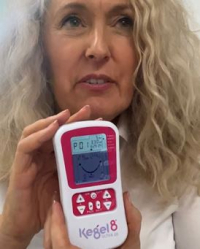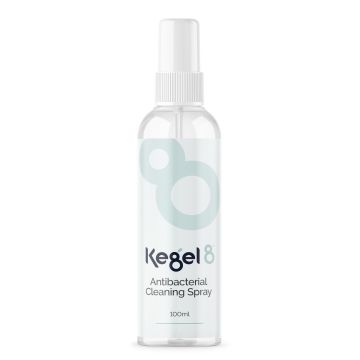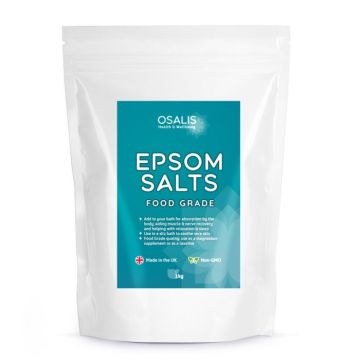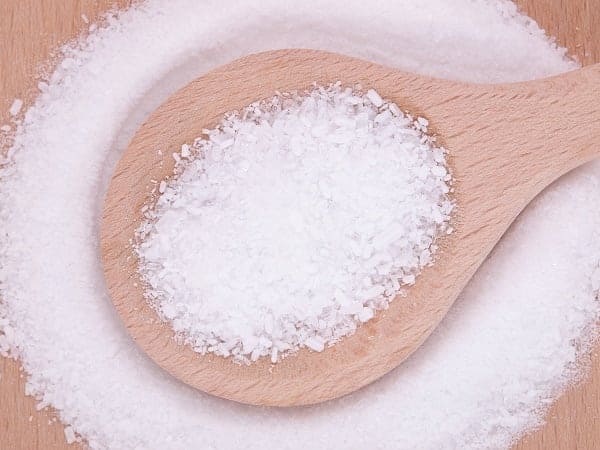
Knowing effective home remedies can often save you a trip to the doctor's office or expensive treatment. Sitz baths were first introduced in the 1840s and used to alleviate lower abdomen complaints. Now, they are used to relieve a number of medical conditions and improve overall health.
What is in a Sitz Bath?
Essentially a sitz bath is a shallow bath to cleanse the perineum (the area between the rectum and vulva/scrotum), sitz baths are often used with warm water and Epsom salts to bring relief to the user.
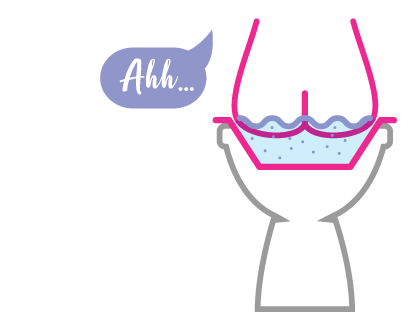
Why Would You Use a Sitz Bath?
Sitz baths can be used to treat and/or relieve a variety of health conditions, including:
Anal Fissures
These can lead to irritation, pain and bleeding as you poop, and spasms in the anus. Anal fissures are small tears in the tissue that lines the anus and can occur due to constipation, straining whilst you poo, passing large or hard stools, and chronic diarrhoea.
Using a sitz bath, you can relax the muscles in the anal sphincter, reducing pain and discomfort. It can also help to health the fissure faster too!
Bartholin's Cysts
When the lubricating glands located on either side of the vagina become blocked and swollen, tiny cysts are created. These cysts can become infected, resulting in a pus-filled abscess.
Although larger Bartholin's cysts may require surgical drainage, smaller ones can drain on their own with a few sitz baths for three to four days. Bathing in a warm sitz bath can help to drain a cyst and reduce its size.
Haemorrhoids
Straining during bowel movements or putting pressure (like pregnancy) on your pelvic region can cause the veins in the anus to swell and form into haemorrhoids (piles). You may experience itching, irritation, pain, bleeding, or even no symptoms at all.
Haemorrhoids can go away within a week or so with at-home care, including sitz baths. Epsom salts can provide relief by reducing pain and shrinking swelling.
Postoperative Recovery
Your doctor may recommend a sitz bath as part of your post-operative care. Dr Clara Paik, Clinic Medical Director of Obstetrics and Gynaecology at UC Davis Health, has said that "sitz baths are great for helping with discomfort but also wound drainage and cleaning after an operation in [the pelvic area], especially after urinating or bowel movements to decrease bacterial load."
Postnatal Care
You may be given a sitz bath in your early postpartum period. This can help to ease pain, promote healing, reduce swelling and ensure good hygiene in the perineal area. Sitz baths are particularly recommended after an episiotomy or if you tear during childbirth.
Vulvodynia
Chronic discomfort around the vaginal opening does not have a clear cause. But symptoms of vulvodynia can include unbearable burning, throbbing, stinging, itching, and other discomfort.
A sitz bath can help to soothe the area and relieve swelling or irritation.
Vulvovaginitis
Also referred to as vaginitis (inflammation of the vagina) and vulvitis (inflammation of the vulva), vulvovaginitis can be caused by irritation, STIs, bacterial vaginosis, wearing wet garments for prolonged periods, or allergies to substances like soap. Symptoms can include burning, itching and swelling.
Dr Amber Tully MD, a family medicine physician at Cleveland Clinic, has said that a sitz bath can "subdue the uncomfortable symptoms of vulvovaginitis."
How to make a sitz bath
Making a sitz bath is both incredibly easy and boasts a range of benefits. For example, they prove effective for cleanliness in sensitive areas and relieving irritation.
There are a couple of options for home sitz baths. It’s possible to attach a portable sitz bath to your toilet. But if this isn't for you, you may feel more comfortable recreating the effect of a sitz bath in the comfort of your home bathtub.
To prepare a toilet-mounted sitz bath, you should:
- Raise both the toilet seat and lid and place the sanitised sitz bath so it rests on the rim of the bowl
- Fill the sitz bath with warm water – if the water is hot to the touch, let it cool first to avoid pain or injury
- Add the recommended amount of Epsom salt (see our advice below) or any prescribed medicine to the water if advised by your healthcare provider
If you’re not using a specialised sitz bath and opting for the tub instead, you should:
- Run a bath with suitably warm water – the water should be no more than 4- to 5-inches high
- Add any prescribed medicine solutions or Epsom salt to the bath, and allow time to dissolve before getting in
How to use a sitz bath
The trickiest part about using a sitz bath is the preparation – for the time you’re sat down, you can relax.
However, it’s important to be mindful of a few considerations to get the most out of your sitz bath.
When using your sitz bath, make sure:
- The water is warm - The skin around the perineum, vulva and anal areas is extremely sensitive, so make sure the water isn’t scalding hot. A trick to check the temperature is running the water over your wrist, as the skin there is thin. If it’s too hot on your wrist, it’s too hot to sit in.
- You sit comfortably – It’s important to get comfortable. For effective results, you can sit on a sitz bath anywhere from 10-20 minutes, 3 times a day – so make sure you’re able to get comfortable and relax.
- You’re careful getting up – Especially for those enjoying the benefits of a sitz bath postpartum, there’s an increased risk of experiencing dizziness and nausea when getting up. Make sure to take your time and get up gradually to avoid a ‘headrush’.
- Take care when drying – If your intimate area is irritated or you’re dealing with open wounds post-childbirth, any excessive rubbing is likely to make the problem worse. Dry yourself by gently patting the anogenital area with a cotton towel to avoid irritation.
- Clean up afterwards – when you’re done, wash your hands and scrub the sitz bath down in warm, soapy water, ready for next time.

The Kegel8® Fold Away Sitz Bath has been designed for the ultimate, comfortable experience and ease of use. Its strong materials are smooth, comfortable to use, and antibacterial - allowing for easy clean after use. Non-slip pads are also located across the base of the Kegel8® Fold Away Sitz Bath to keep bathing stable and secure. Plus, the collapsible design allows for discreet, flat storage and easy use on-the-go.

It can also double up as a bidet! The clever design of this bidet seat features five drainage holes at the back so if you accidentally overfill the Sitz Bath, any extra water will drain directly into the toilet basin, preventing any accidental spills. Swapping toilet paper for a bidet is much more environmentally friendly and reduces costs. Once you have experienced the ultra-clean feeling of using one, you'll never go back!
How much Epsom salt is needed for a sitz bath?
If you’re using a portable sitz bath, it’s recommended you add a ½ cup of Epsom salt for effective results.
However, if you’re creating a sitz bath in the tub, use two cups of Epsom salt in 4-5 inches of warm water.
Using a sitz bath after giving birth
Giving birth places a huge amount of stress on the body – and sitz baths can be a lifesaver when it comes to anogenital aftercare post-birth.
For many, sitz baths are the only way to get relief from irritation and painful cuts and sores or fissures in the vaginal, perineal and anal areas. Sitz baths not only soothe these regions but keep them clean, which is critical to preventing infection and further complications.
In the postpartum period – where the body is healing and adjusts to no longer being pregnant – some people experience cramps, swelling and soreness around the vulva opening. This can also be soothed with a warm water sitz bath.
People undergoing postpartum recovery should make sure they wait at least three days after giving birth before bathing or soaking, just to be on the safe side. As the uterus can remain dilated for several days, there’s a risk that bathing any sooner may introduce unwanted bacteria, opening the door to a range of potential problems.
The process of using a sitz bath postpartum is the same, though. Use warm – not hot – water, soak the anogenital area for around 10-20 minutes up to three times a day and pat gently dry afterwards.
To find out more about how Kegel8 can help kickstart your anogenital care routine, speak to our team today, or check out our range of portable sitz baths.
Sources
[1] BBC (2014) Sitz Bath [online]. Available from http://www.bbc.co.uk/ahistoryoftheworld/objects/T9wmVY97RGyjSbD2ttkHVg
[2] SELF (2019) What the Hell Is a Sitz Bath? [online]. Available from https://www.self.com/story/what-is-sitz-bath?mbid=synd_yahoo_rss
[3] verywell family (2019) The Benefits of Postpartum Sitz Baths [online]. Available from https://www.verywellfamily.com/sitz-bath-perineal-care-after-birth-2759449






